Table of Contents
Karaoke Izakaya Sakae カラオケ居酒屋サカエ
Google Map Link: 1-6-16 Sawanocho, Sumiyoshi-ku, Osaka-shi, Osaka 558-0031. Tel: 06-6694-3860. Open: 17:30-23:30.
Karaoke Izakaya Sakae is a beloved neighborhood izakaya near Sawanocho Station on the Nankai Koya Line that has been in business for over 50 years. It is known for its delightfully chaotic and welcoming atmosphere, large portions of food at low prices, and friendly staff and regulars, including more than a few colorful characters. It’s a karaoke izakaya where singing doesn’t cost an extra fee. That’s right, you can sing to your heart’s content without paying for the privilege.

Anaba (穴場) Means “Local Secret”
Sakae is a prime example of an anaba, which can be translated as “a local secret.” This might suggest there is an element of gatekeeping involved, but that is not the case at all. The clientele is mostly locals, but people like me find out about it through word of mouth. In my case, several owners of my favorite bars and restaurants come here to unwind, and they recommended it to me as a place I would enjoy.
There is a perception that social media and influencers have the power to make places like this into crowded “hot spots” overnight, but the reality is quite different. Few people are going to hop on a train, ride 20 minutes from Namba, and get off at a small local stop just because they saw a reel on TikTok. Maybe that happens in the city center, but at a place like Sakae it feels as if the Internet never existed, and that is a good thing.

When my wife, M., and I walked through the doors, we received one of the warmest welcomes from customers and staff that I have experienced in all my years in Osaka, and that is saying a lot. It turns out that several of my foreign friends have been coming here for years. I was just late to the party.
Atmosphere: Every Object Tells a Story
We’ve established that Sakae is cheap, but this lovely old place would still be worth visiting if they charged normal prices. It’s filled with interesting knick-knacks and cultural artifacts collected over decades. As I’ve stated before, Marie Kondo doesn’t know squat when it comes to the beautiful, unhinged, dusty, soiled, faded clutter found in wonderul neighborhood joints off the beaten path.
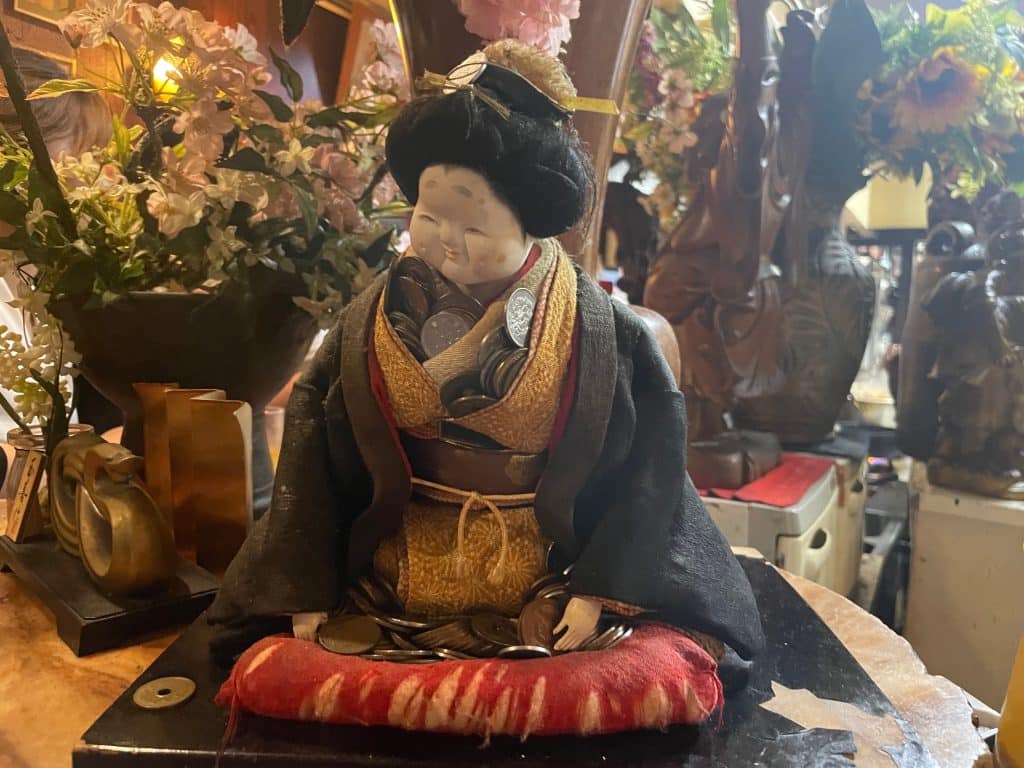
Izakaya Sakae feels like a living museum, where every object has a story to tell. Take, for example, the porcelain doll with coins spilling from her kimono. How did she find her way to this very spot? Who brought her here? When did people begin leaving money for her? So many questions remain.
Beautiful Clutter
The shelves are lined with dozens of figurines and ceramic animals, including tanuki (raccoon dog) statues, maneki-neko (beckoning cats), turtles, owls, and lions. On the wall hangs a large straw hat decorated with artificial flowers and ribbons.
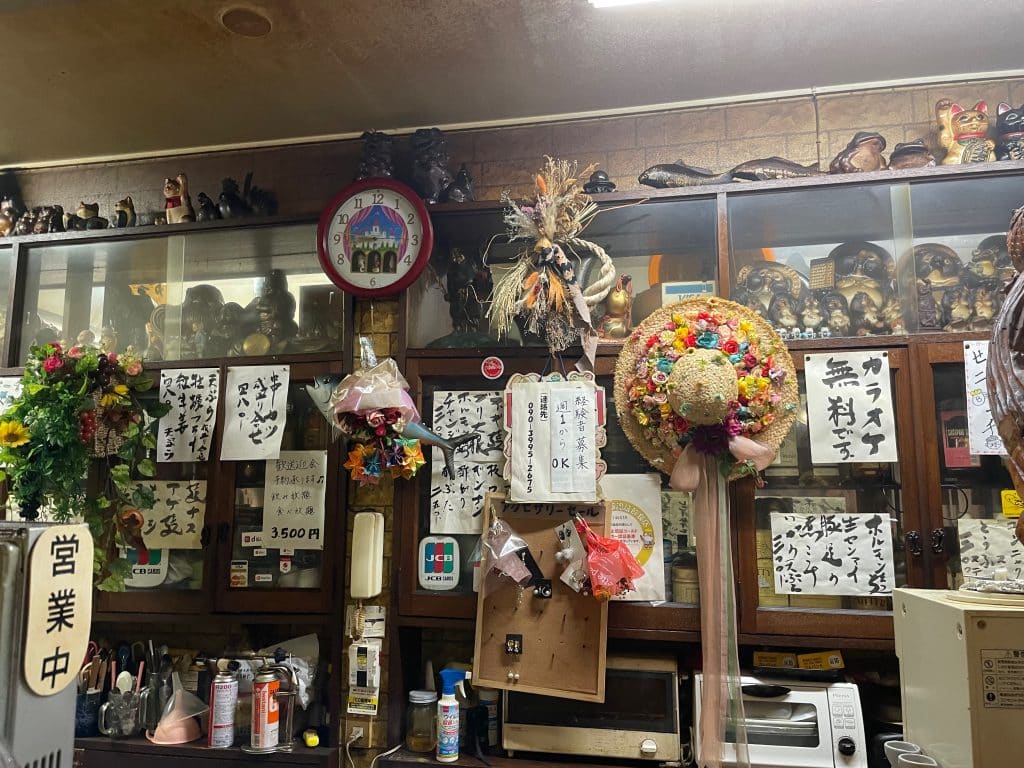
Nearby, a familiar red and white clock catches my eye. Its little figurines spin around on the hour, and I remember receiving the exact same clock as a wedding present from my colleagues almost thirty years ago. Directly below it, a landline phone is mounted on the wall, surrounded by handwritten Japanese signs advertising free karaoke and daily specials. On the bottom shelf, there’s a jumble of cooking tools, utensils, spray cans, and two toasters—one battered and stained, the other looking almost brand new.
Gods and Goddesses
The objects become more elaborate as you make your way around the oval-shaped counter. The most striking is a hand-carved wooden statue of Kannon, the Goddess of Mercy, flanked by two very large tanuki figures. To the right, seven reddish-brown figures represent Shichifukujin, the Seven Lucky Gods.

On the left, three daruma figures sit alongside smaller carvings, including a turtle with a dragon’s head and a deity riding a fish. I’m amazed that so many objects can fit in this space but we’re just getting started. Here’s a quick run-through of some of the other items seen in the following photos.
Hawks and Tengu
The first object pictured in the bottom-right is an earthenware ceramic jar called kame (甕) that usually contains shochu. In the center there’s a rather large carving of a bird (a hawk?) with an enormous wingspan. If you look carefully, you can see a wooden tengu mask in the upper right, which is said to bring good luck and protect one from evil spirits. I’m not sure of the significance of the tree branches and dried flowers in the bronze pot, but I’m sure it reflects the tastes of the owners.

Beckoning Cats and Daruma
On this shelf you can see four maneki neko and a one-eyed daruma. I’ve been to yakiniku restaurants where the maneki neko were so covered in grease that they had turned completely black. These ones look old, but they still retain their golden shine.
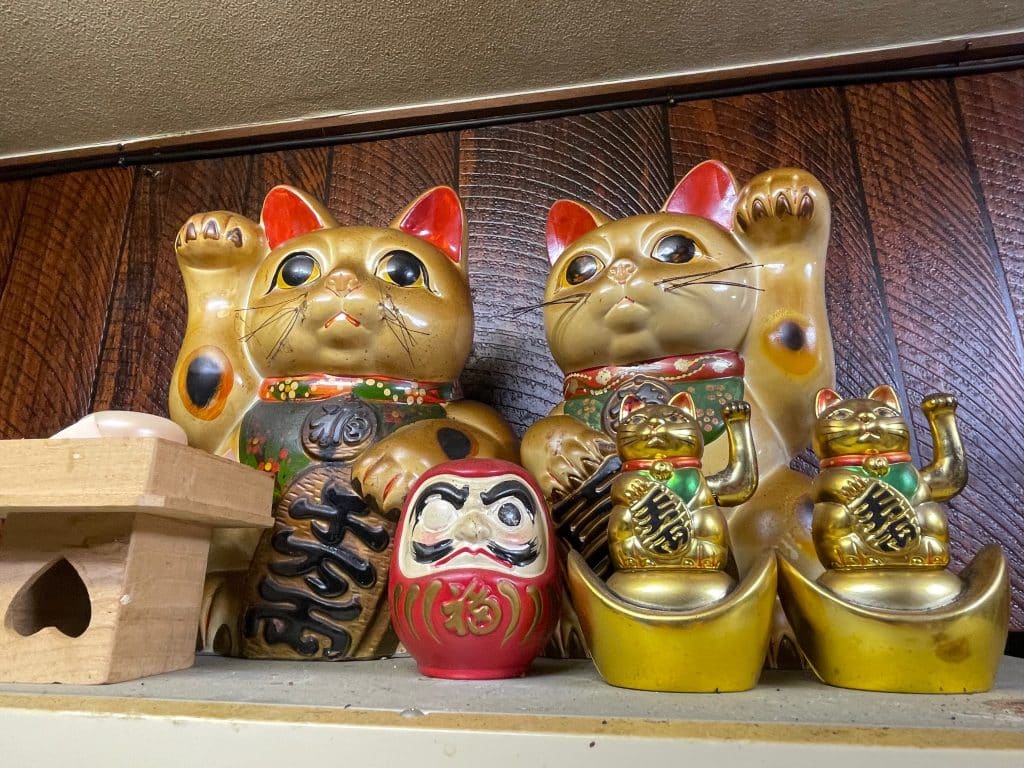
Anubis From Egypt
I practically did a double-take when I came across a bronze sculpture straight out of the Museum of Natural History. Having no idea what it was, I did a Google image search and got the following information: “This object is a sculpture of an ancient Egyptian-inspired figure, most likely representing Anubis, the jackal-headed deity associated with mummification, the afterlife, and protection of the dead in ancient Egyptian religion.” I wonder how this replica ended up at an izakaya in Osaka? (Update: I asked the owner and she said it was a gift from a customer).
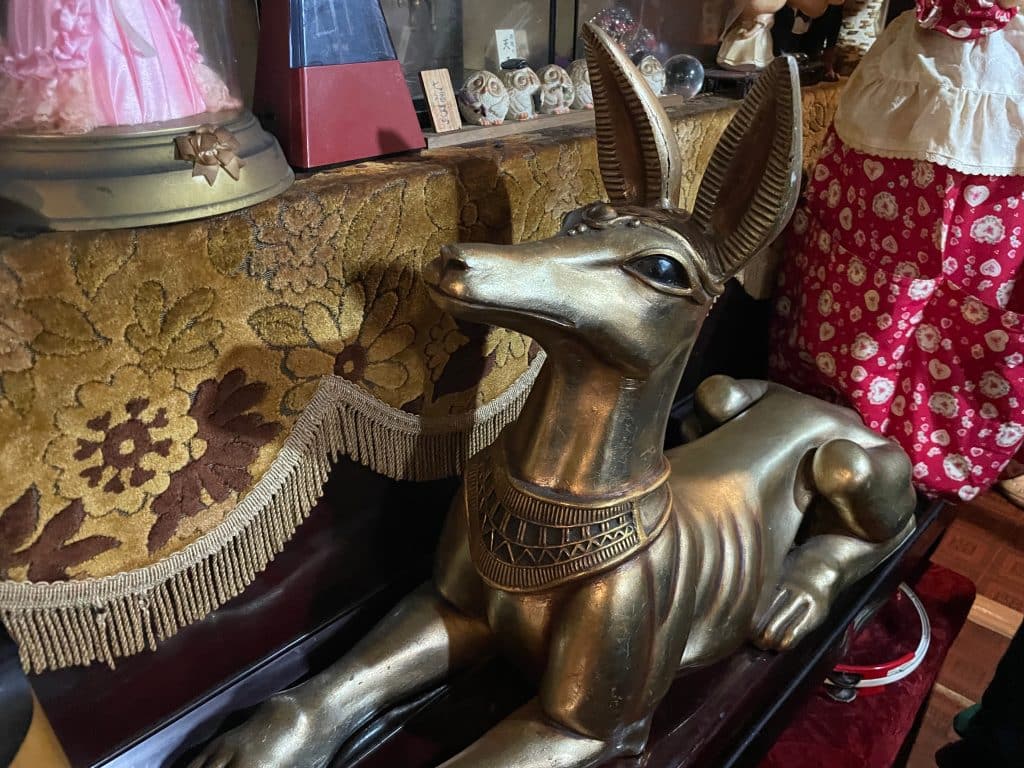
The A La Carte Option
We had eaten a big lunch, so we decided to go with the a la carte option. Since most of the items were only 150-300 yen we assumed the portions would be small, so we ordered 4-5 dishes. Boy, were we wrong!
Yakitori ¥300
The first dish served was a jumbo size of yakitori containing three skewers, but it was almost enough for a whole meal for one person. Each skewer contained four generous cuts of chicken smothered in a pool of a thick sweet and smokey flavored sauce.

Fresh Avocado and Tomato Salad ¥300
I do most of the shopping these days so I am very familiar with rising costs, especially when it comes to fresh fruit and vegetables. Last year I enjoyed making avocado toast every morning until I started noticing that every other avocado was blackened and inedible. A good avocado could set you back 400 yen. I’ve also had to witness the price of a single tomato skyrocket during the same time. This is why I really appreciated the fresh ingredients used to make this salad for only 300 yen. There is nothing worse than soggy lettuce, but here it was crisp and crunchy . I wanted to ask the owner where she sourced her avocados but that would have like been asking her to reveal trade secrets.
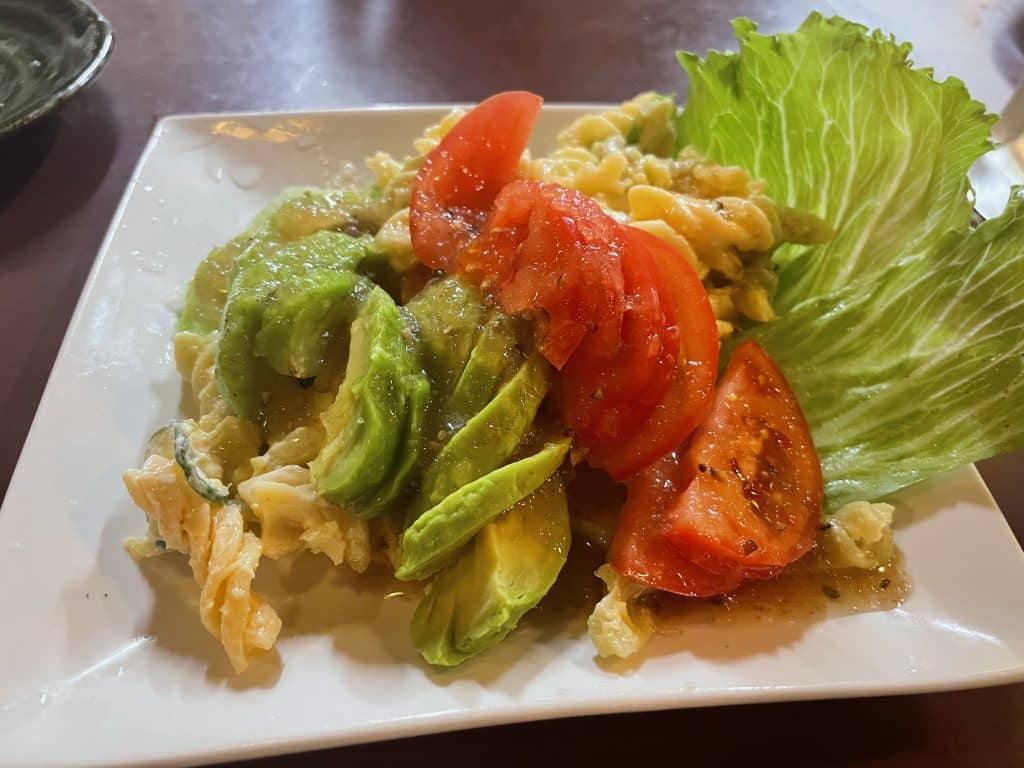
Oden 3 for ¥200
My wife ordered a serving of oden, but the owner informed us that it wasn’t ready yet. A half an hour later she announced that she was doubling the order as “service” (on the house) for making her wait. I’m not usually a fan of the bitter taste of daikon in oden, but here it was refreshingly sweet and melted in my mouth. Even the rubbery konyakku had a robust flavor. It should be noted that this serving of oden contained the longest chikuwa I have even seen (No double entendre intended).Oden is not a dish I go out of my way to order when drinking, but I would definitely get this again without a second thought.
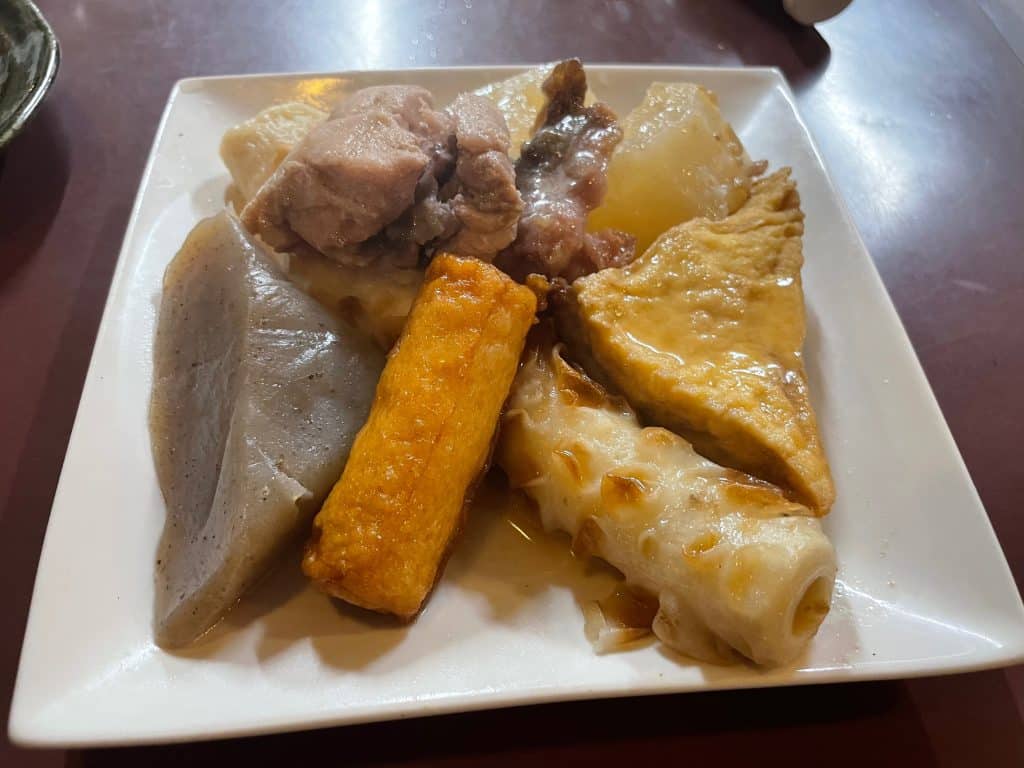
Karaage ¥300
When we ordered karaage fried chicken, we didn’t expect it to come with lettuce, a tomato slice and French fries for the equivalent of $2.04 with the current exchange rate Out of all the dishes I tried, this was probably closest to ordinary bar food, and I don’t mean that in a bad way. It was a nice snack between dishes that paired well with a cold beer on a hot day.

Sashimi ¥300 per item
Comedian John Mulaney wrote a hilarious sketch for Saturday Night Live about the dangers of ordering sushi from the airport. In most cases, I would strongly advise ordering sashimi from a karaoke chain because it was probably prepared by a high school student doing a part-time job. However, it is important to keep in mind that Sakae is an izakaya first, one that has been around for over a half a century. They know what they are doing when it comes to their most popular dishes.
We ordered a moriawase platter containing kanpachi (greater amberjack), aburi maguro (seared tuna), tako (octopus) tai (sea bream) ika (squid) and salmon. The platter came to around 1,000 yen. It was fantastic, especially the seared tuna.
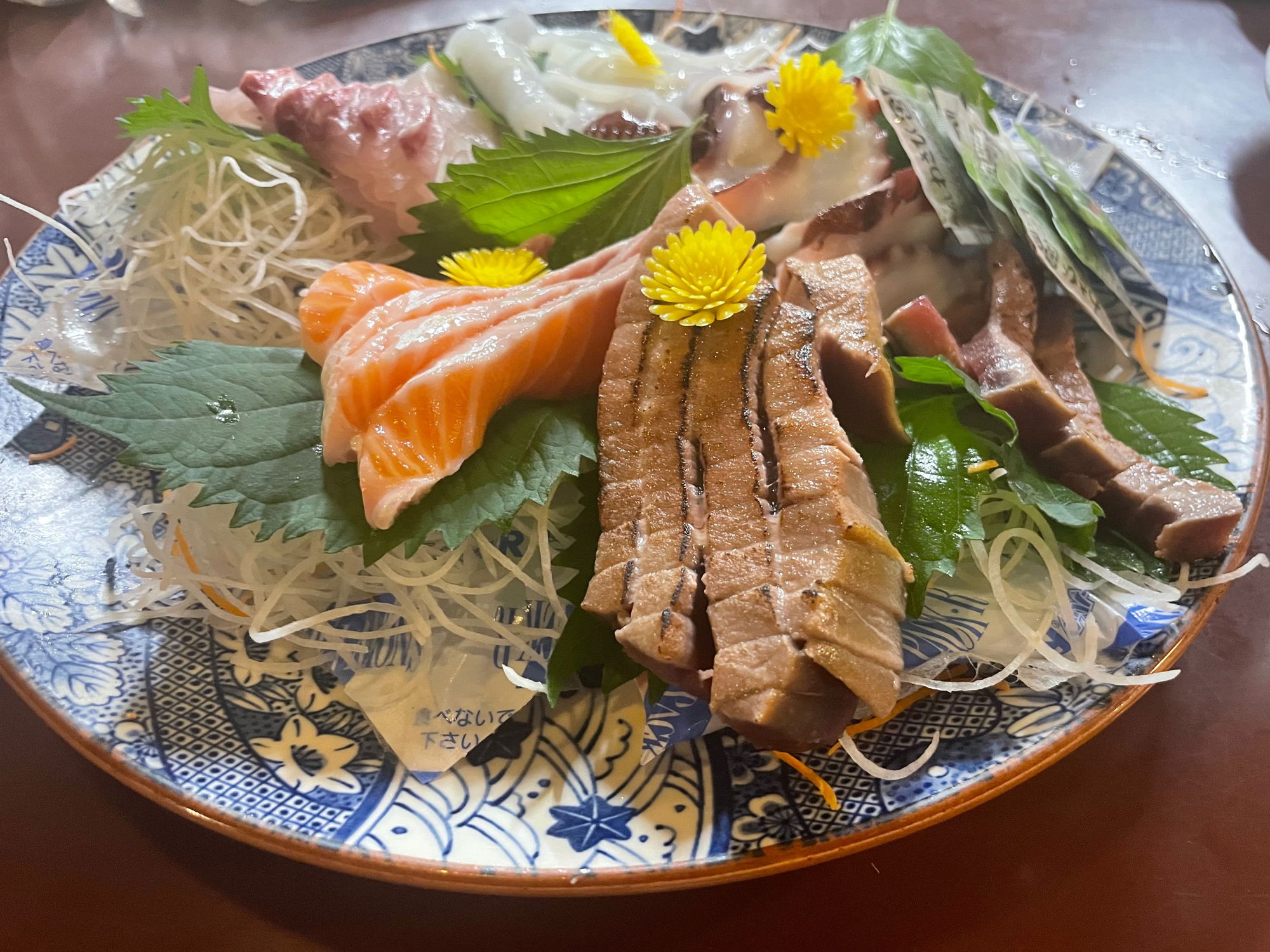
Sukiyaki* | Buta Kimchi ¥250
The menu clearly states that an order of sukiyaki is ¥250. This price also applies to kaki nabe (oyster hot pot) and agedashi tofu. However, on the day we arrived it was completely sold out, so I was not able to check the portion size myself.
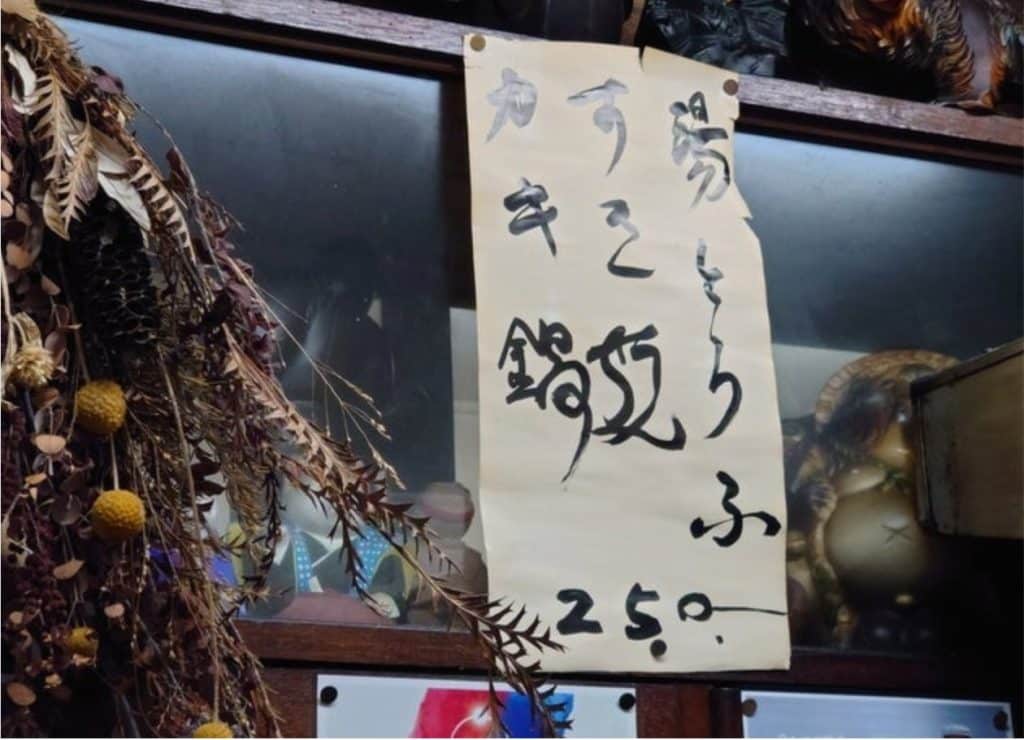
One blogger mentioned that a single serving of sukiyaki was enough for three people, but I’m not sure if the photo below is a double order or intended for a group. Now I have a good excuse to go back and try it. Look for an update in the comments section. Or you can stop by and let me know. Thanks, dear reader!

Although I was a bit disappointed that I couldn’t try the sukiyaki, I decided to go with the next best thing: buta kimchi. I can confirm with certainty that this dish was indeed ¥250, and I don’t think you’ll find it for a cheaper price in all of Osaka.
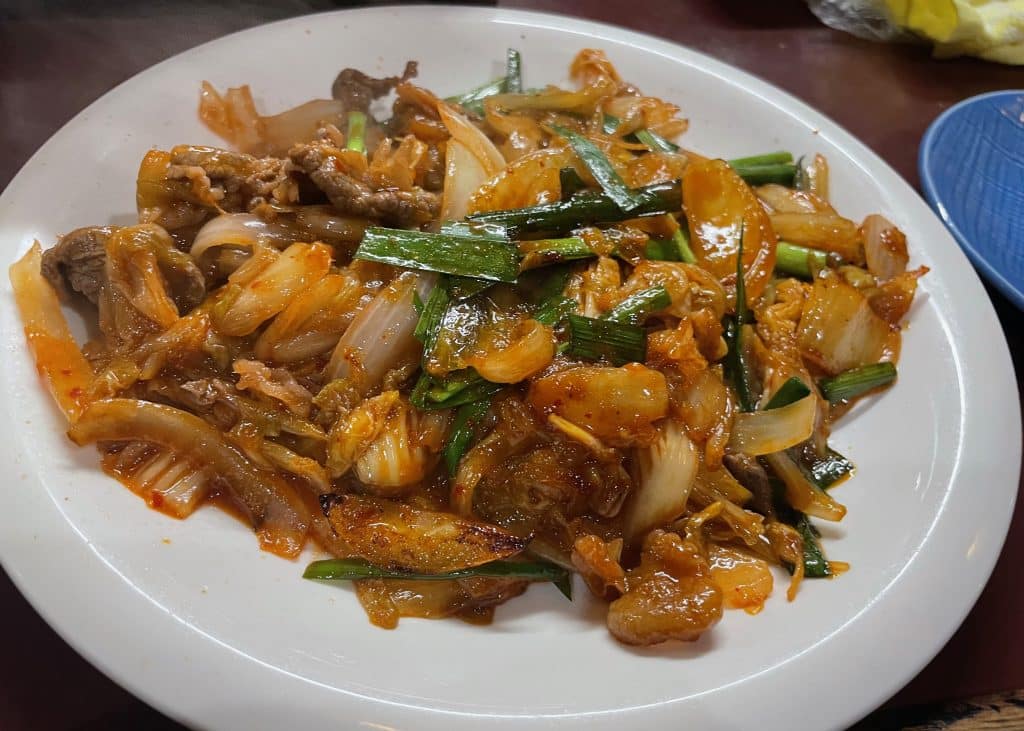
Draft Beer ¥350
This is a great price for Asahi Beer on tap. The price of beer is rising and a lot of places are switching to cheaper happoshu type beer in order to stay competitive. And it’s not unusual to pay ¥500 or more in Namba or Umeda. It does make a difference if you are planning to drink a lot over the course of the evening. Singing a few numbers is a good way to build up a thirst.
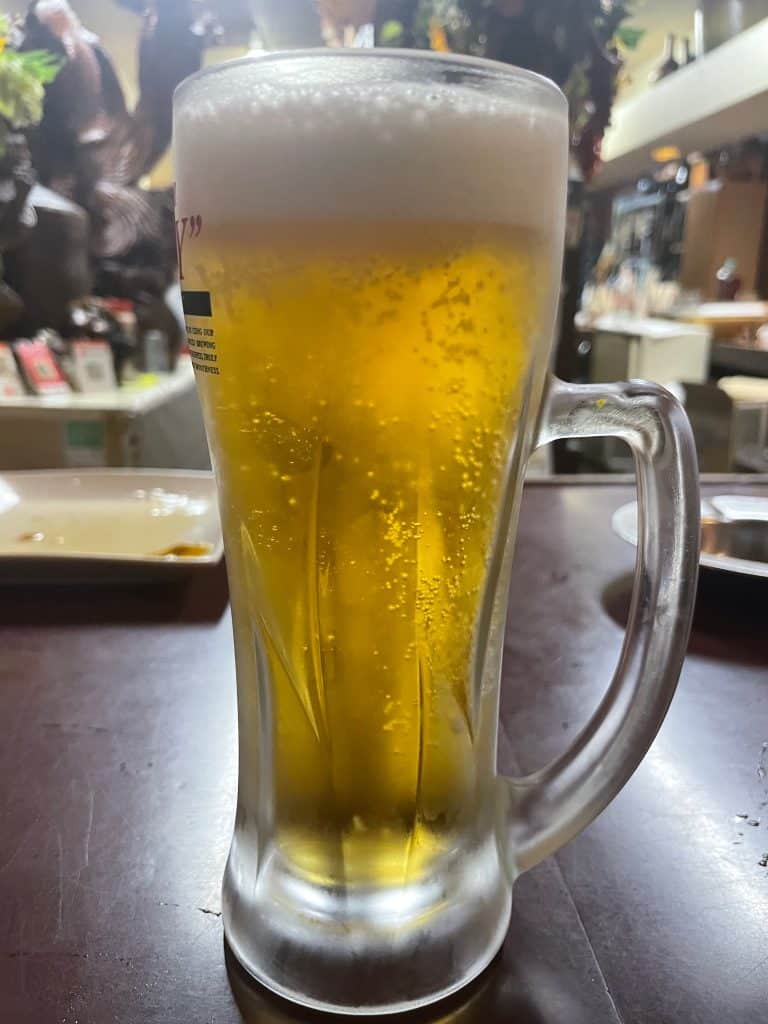
My poison is beer, so I often forget to list the other drink prices. Here’s a photo of the entire drink menu taken on September 6th, 2025. As you can see most of the drinks are also around ¥350.
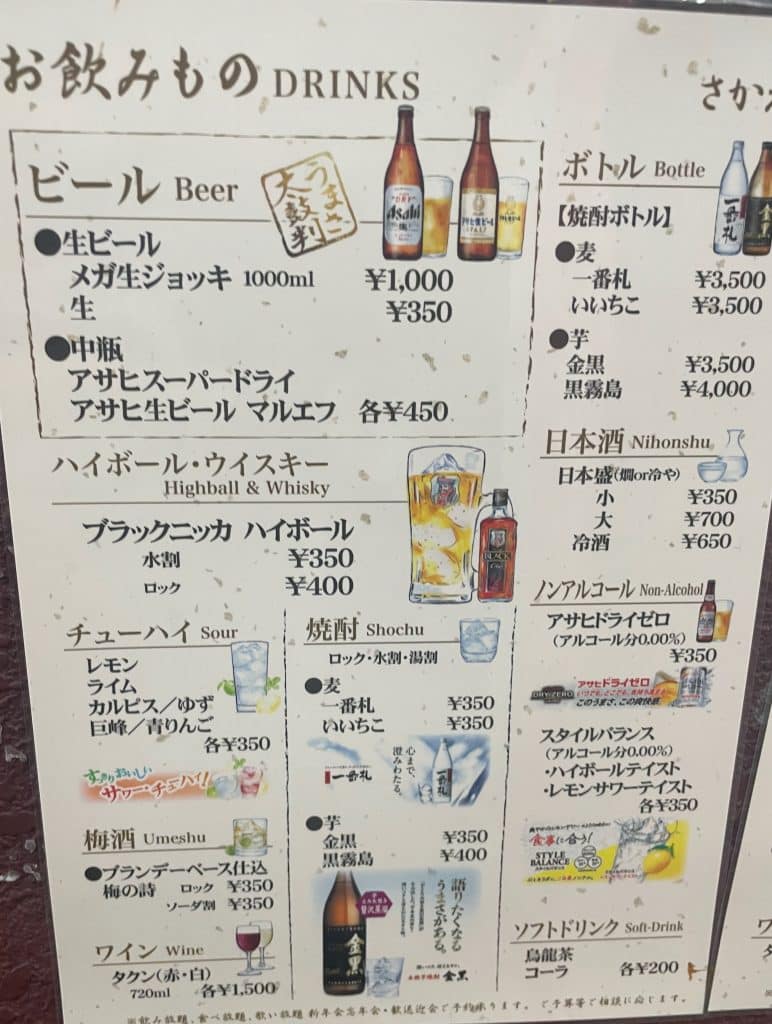
Bottled Beer ¥450
Again, a fantastic deal for a large bottle of Asahi Dry. Whenever I visit Kyoto or Tokyo, I pay around 700 for a medium sized bottle which you can down in three gulps. I decided to order the Asahi Maru F, which is a limited revival of a beer that was originally released in 1986. It’s said to be closer to a European lager than Super Dry, but I hardly noticed the difference.

Asahi Super Dry One-Litre Mega Joki ¥1,000
Normally, I would highly recommend the 1-litre joki of beer because it makes a really fun photo, since the mug is bigger than most people’s heads. At 700 yen, it was well worth the price. Then it went up to 800 last year, and now it is ¥1,000, which is still only $6.70. I guess it’s still a good deal, but I’d much rather get two bottles or three draft beers for around the same price. Hell, don’t listen to my grumpy old cheap ass. Enjoy yourself by ordering a round of these big boys. They really set the mood for the rest of the evening.
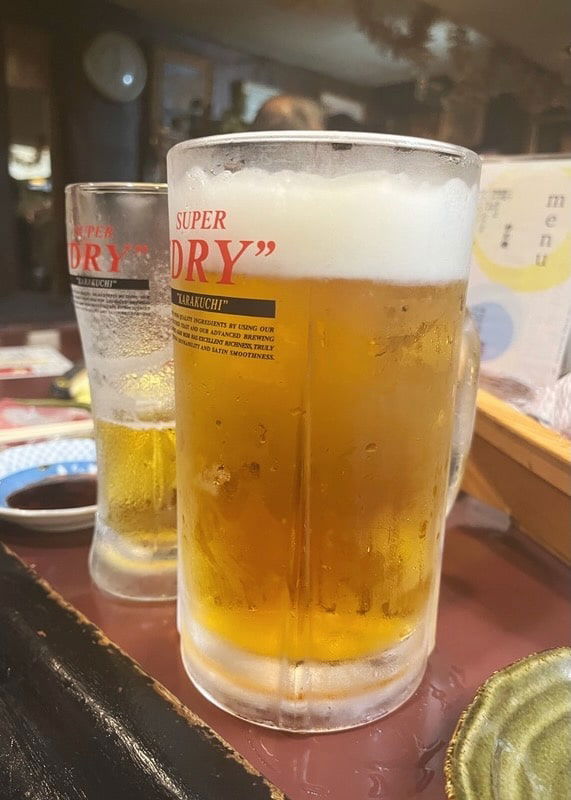
The ¥1,000 Senbero Set Option (Until 8PM) Comes with Two Drinks
Senbero is a term created by the late writer Ramo Nakajima back in the 80s. It was used to describe places where you could eat and drink your fill for around 1,000 yen. Over four decades have passed, so maybe the amount needs to be updated to ¥2,000 to account for inflation. The deal still lives on at Sakae, however. I look forward to ordering it on our next visit.
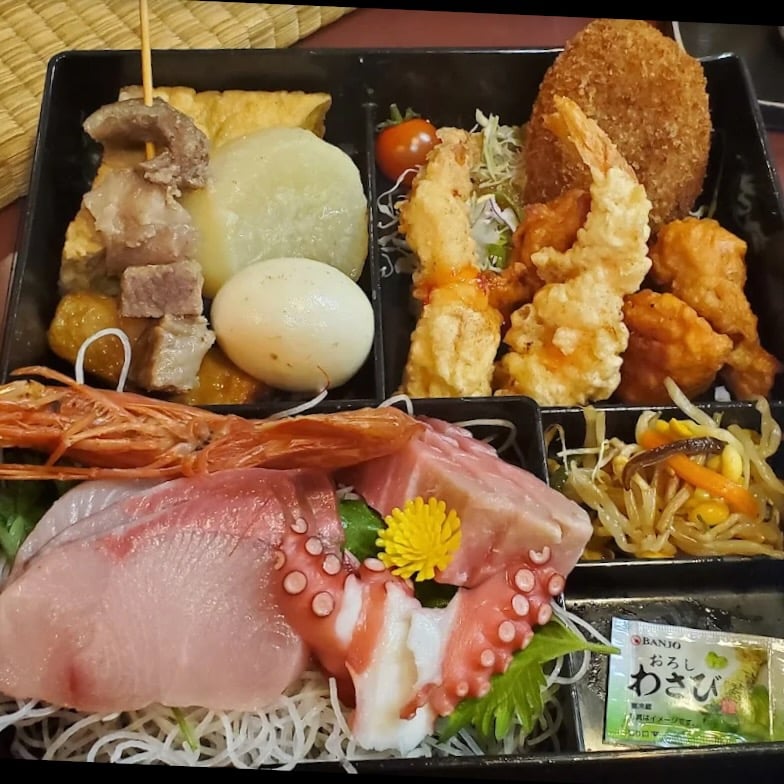
This is like a greatest-hits package of the most popular dishes on the menu, served in a generous-sized bento box. Plus, you get two drinks! When I visited the second time, all of the customers received twice the amount of food shown in the photo above. The owner must have been in a great mood, because this was the ultimate “service.”
3,500 All You Can Eat and Drink Option (3 hours)
Sakae offers an all-you-can-eat and all-you-can-drink course for ¥3,500, which includes sukiyaki, sashimi, nabe, and other seasonal dishes. Reservations are required. The meal is served in a traditional Japanese-style tatami room, making it a great option for both small and large groups, especially during bonenkai season. One of the best parts of this system is that you’re allowed to take any leftovers home.
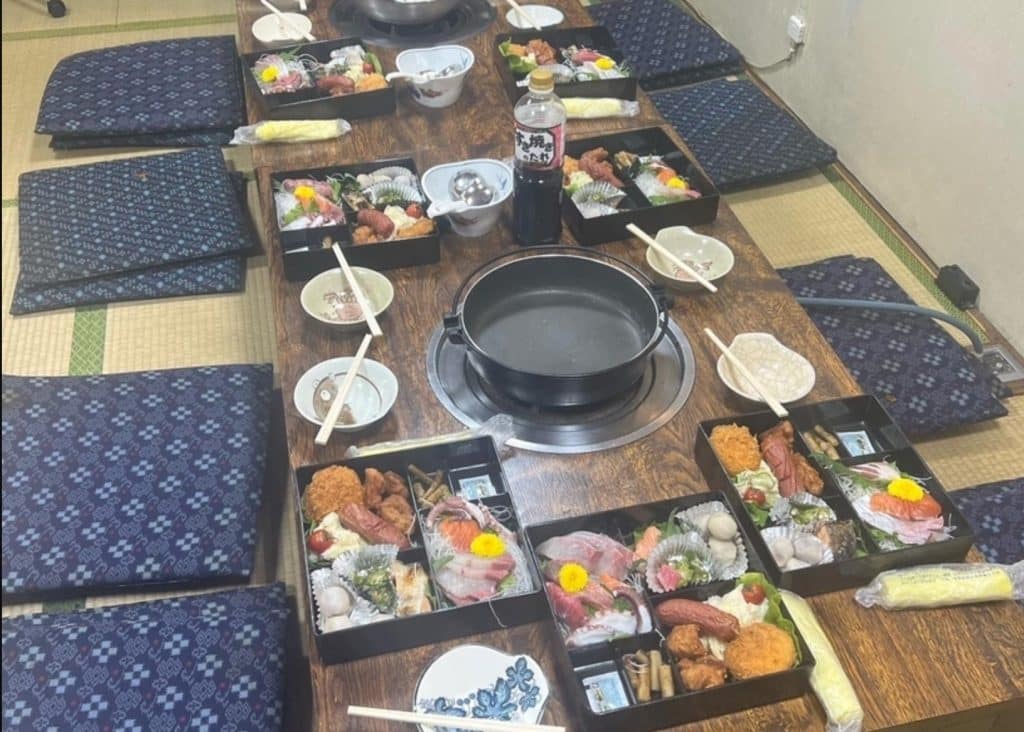
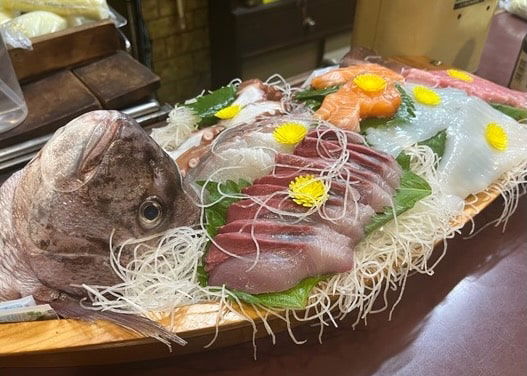

Karaoke Time: Popular Hits of The Showa Era
Visiting a place like Sakae is so much more than just enjoying good food. It’s about broadening my musical horizons by hearing songs performed up close by people who grew up with them, and feeling the memories those songs stir in both the singers and the small audience gathered around.

From 6:00 p.m. to around 8:00 p.m., the patrons sitting around the bar are mostly, though not exclusively, older regulars who often sing enka songs. At times, I have been moved to tears by the raw soulful beauty of these type of amateur performances, and I wonder if seeing a professional enka singer in concert would have the same effect on me.
Yume Shibai (Dream Play) 夢芝居
I was mesmerized watching a gentleman in his 80s perform a powerful version of “Yume Shibai” (Dream Play) the 1982 hit by Tomio Umezawa. As he was singing, I took a photo of the lyrics on the screen: “あんなきれいな瞳をしたやつをなんで汚しよごこの水に”. Translation: “Why would you stain someone with such beautiful eyes with this dirty, muddy water?”

Ii Hi Tabidachi (A Fine Day for a Departure) いい日旅立ち
The next singer was a woman in her 70s who sang “Ii Hi Tabidachi” by Chihiro Onitsuka, which was released in 1978. I have heard this song many times before and its always a thrill to hear someone sing it with such poise and grace.

Tombo (Dragonfly) とんぼ
The next number was a collaboration between two gentlemen sitting on opposite sides of the counter. I had recognized one of them as the owner of a popular horumon restaurant in Nishinari. He was there enjoying the senbero set with his wife and their two small children. They both wanted to duet on a song by Tsuyoshi Nagabuchi, who is kind of like the Bruce Springsteen of Japan because of his working-class appeal. I am not sure of the details, but in recent years he has fallen a bit out of favor, possibly due to his political views.
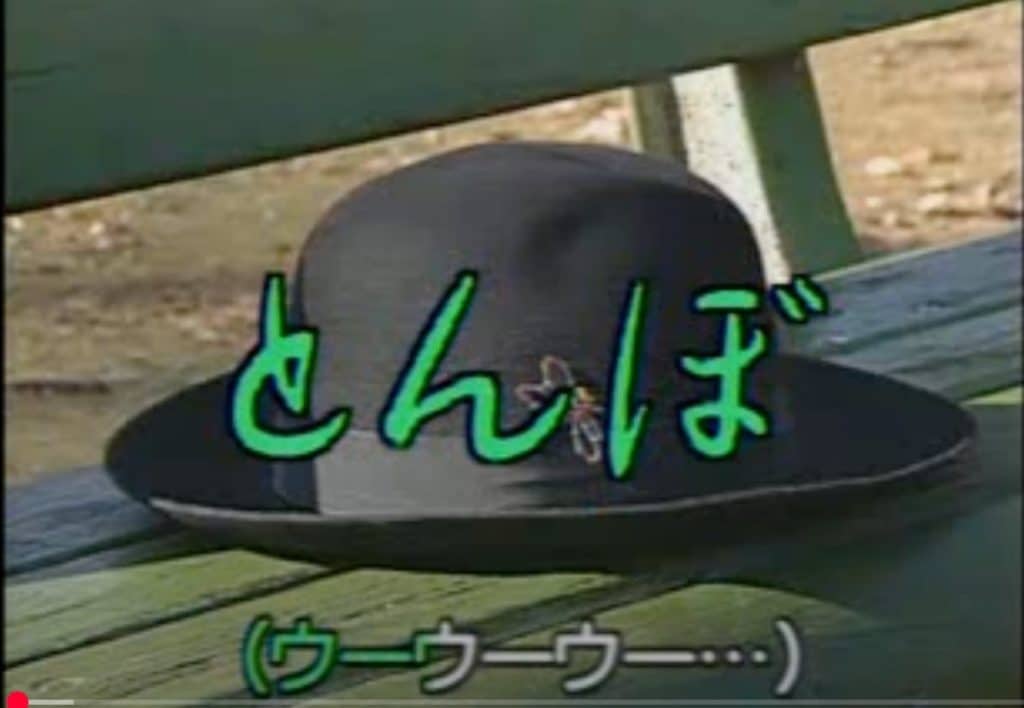
Whatever the case, I really love the song Tombo (Dragonfly) since hearing it as an exchange student way back in 1989. So I did something a bit out of my comfort zone. I interjected and requested the song, which they were happy to oblige. They decided on the live version, which I had never heard before, and did a bang up job of sharing the vocals.
Take Me Home (Country Roads)
Having eaten our fill, it was time to sing for our supper. I find it’s best to start off with an old favorite that everyone knows, rather than selecting an unfamiliar song that will go over everyone’s head. Once my friends and I angered the owner of a small bar by belting out an obnoxious version of “(You Gotta) Fight For Your Right (To Party”) by The Beastie Boys. The median age of the other patrons was around 75 and it did not go over well.

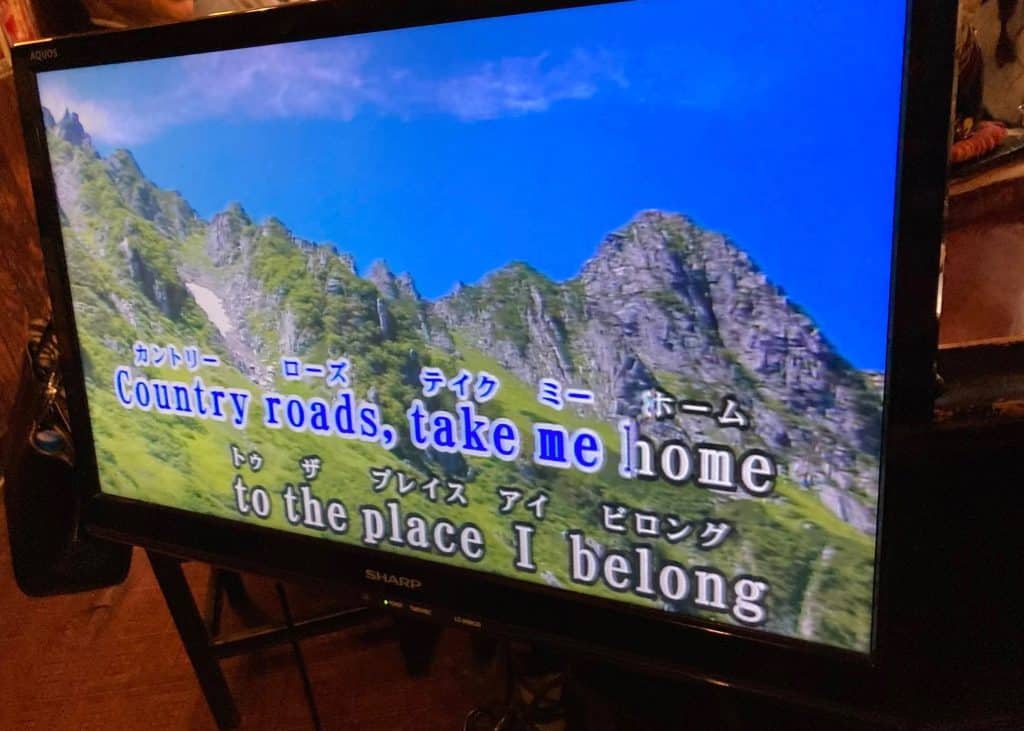
You can’t go wrong with Take Me Home (Country Roads) by John Denver. It’s a song that’s both appreciated by old and young music lovers, partially due to the fact it was featured in the 1989 Studio Ghilbi film Mimi o Sumaseba (Whisper of The Heart). I can do a passable version, and received a nice round of applause from the regulars.
Imagine being upstaged by The Hotel California
What happened next was somewhat comical, yet expected because I had experienced it many times in the past. The next five people decided to sing English songs. Their confidence was probably boosted by listening to the one foreigner in the place mangle a simple tune in his native language.
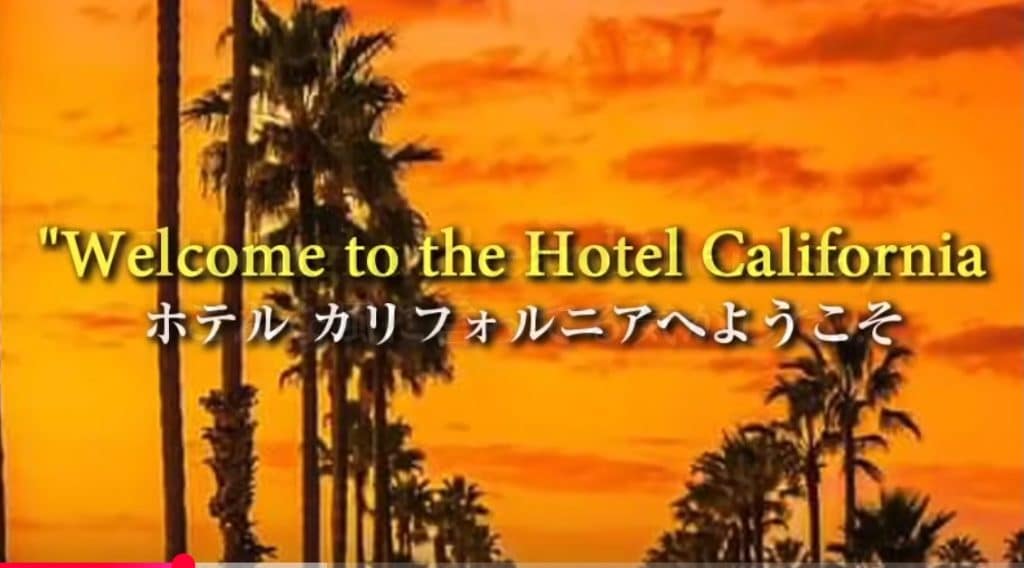
Suddenly, I heard an incredible version of Hotel California by The Eagles. The U-shaped counter has a wall in the middle, so you cannot see the people at the end of the other side. I assumed the singer was a native English speaker, but she turned out to be a Japanese woman with a powerful voice and a confident command of the English lyrics. This was followed by Imagine by John Lennon, sung by the same gentleman who had performed the duet of Tombo earlier. He looked at me, apologized for his poor English, and then proceeded to knock it out of the park.
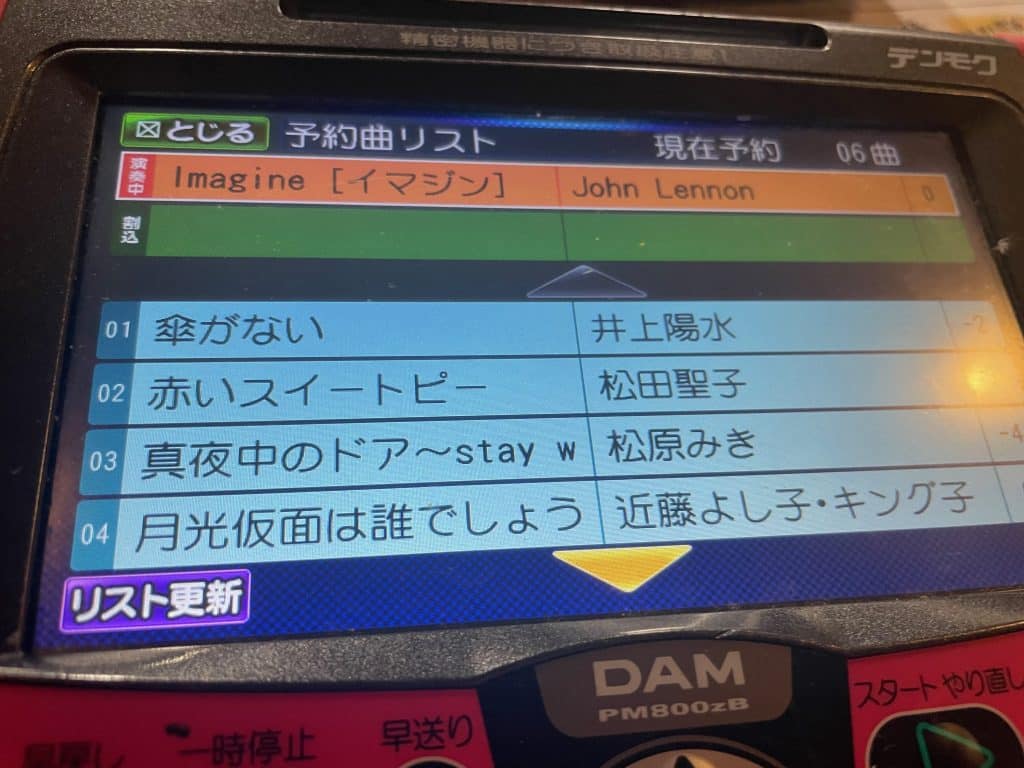
Karaoke Time II: City Pop Blue Hearts in Nirvana
At around around 8 P.M. the place starts to fill up with more people, including a couple of groups of young people in their 20s. I am kicking myself for not getting a photo of a stylish young couple with an incredible fashion sense. Imagine Youki Kudoh and Masatoshi Nagase in Mystery Train updated for 2025.
真夜中のドア STAY WITH ME
The stylish young couple made their selections and I half expected them to choose the latest KPOP hits or newer best-selling artists like Vaundy, Yoasobi or Fuji Kaze. But they surprised me by choosing a tasteful selection of City Pop hits. When “Stay With Me” by Miki Matsubara popped up, I was certain it would be sung by the young woman, but nephew took on the vocals and slayed the track. Seriously, I was blown away by his vocal performance.

One thing I really like about these old neighborhood places is that age is really just a number. The young couple, who had to have been born after the year 2000, were happily chatting away with a couple regulars in their 70s. When I go back to New York, I often feel out of place in a “young” crowd. Suddenly I feel old and self-conscious and want to leave. But here, Peter Pan Syndrome is truly a good thing. Hell, I’d bet this young couple would kill to own one of my vintage rock shirts from the 90s.
Hito Ni Yasashiku (Be Nice) 人にやさしく
My wife happens to be a very good singer and she did a nice job tackling a song from one of her favorite artists, The Blue Hearts. The owner, a woman who was fashionably dressed like Keith Richards, bandana and all, came out from behind the counter and joined my wife on stage. I think it was her seal of approval, like when Johnny Carson used to invited young comedians to sit down on the couch.


Making Friends Through Music and Song
There’s a certain amount of cameraderie formed from singing with people in a small space, which often leads into a discussion of music, which is certainly a lot more fun than talking about politics, the economy or asking total strangers what they do for a living. As the night progressed, my wife and I were able to feel like we were among friends, even thought it was our very first visit and we had no real connection to this area. As the late great philosopher Anthony John Soprano Sr. stated: “Remember the good times.”
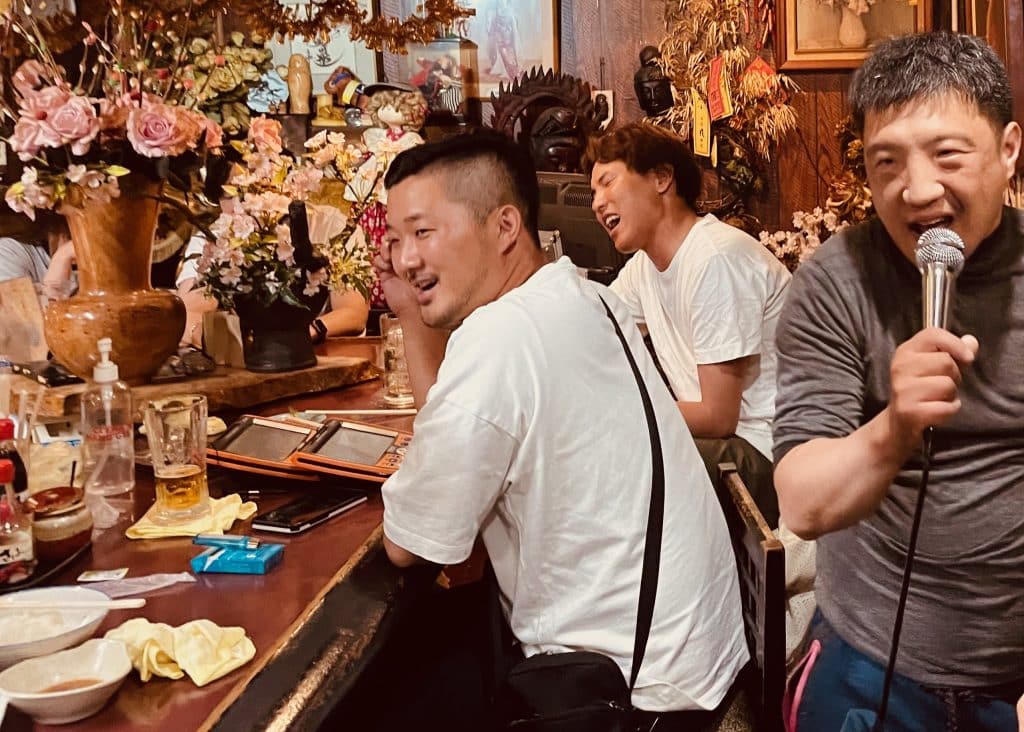
There are times in any gathering where you have to listen to THAT song. You know that one monster hit you can’t stand by Aerosmith, Back Street Boys and One Direction. (If you’ve lived in Japan for any number of years you will know the exact titles of the songs I am thinking of.) But keep in mind these songs are beloved in Japan, for various reasons, including the fact that they are often less difficult to sing than other English songs. So try not to show any signs of disappointment when someone offers to sing one of these tired hits in your honor. That being said, I really really hate that godawful Backstreet Boys song!

Last Song: Smells Like Teen Shite
As I mentioned before, I don’t have the best vocal range. I really should stick to what I know, like Blowin’ in the Wind by Bob Dylan. But our new friends started singing Red Hot Chili Peppers and Oasis, so I thought I would blow their minds with the ultimate ’90s classic: Smells Like Teen Spirit. Spoiler alert: It did not go down as planned.
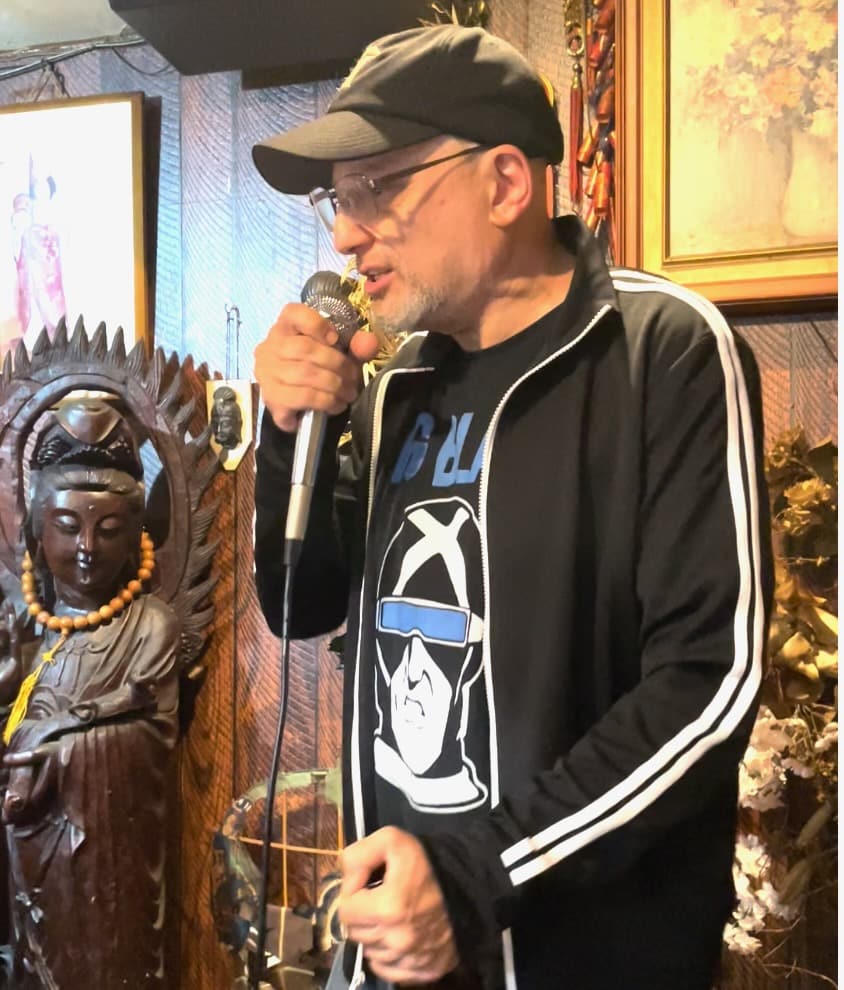
Have you ever been in a situation where you realize there’s no way on earth you can make it through the song? That happened about 30 seconds into the Nirvana classic—and we’re talking about a song that runs over four and a half minutes. By the time I got to the line about the potato, the albino, and the mosquito, I was sweating bullets. I wanted to be anywhere but on that stage and dared not make eye contact with anyone in the crowd, especially my wife, who must have been laughing her ass off.

You know, I could have quit at any time, but giving up halfway feels like it violates some kind of karaoke etiquette rule. (I may have just made that up.) Anyway, by the time the song hit the “Hello, hello, hello, how low” I was ready to pass out. Who knew you had to sing it like 50 times? Good grief, was that humiliating! My wife later informed me she captured the whole thing on video, but that will never see the light of day. I’d have to leave Japan. Note to self: Do not ever attempt to sing that Pixies song!
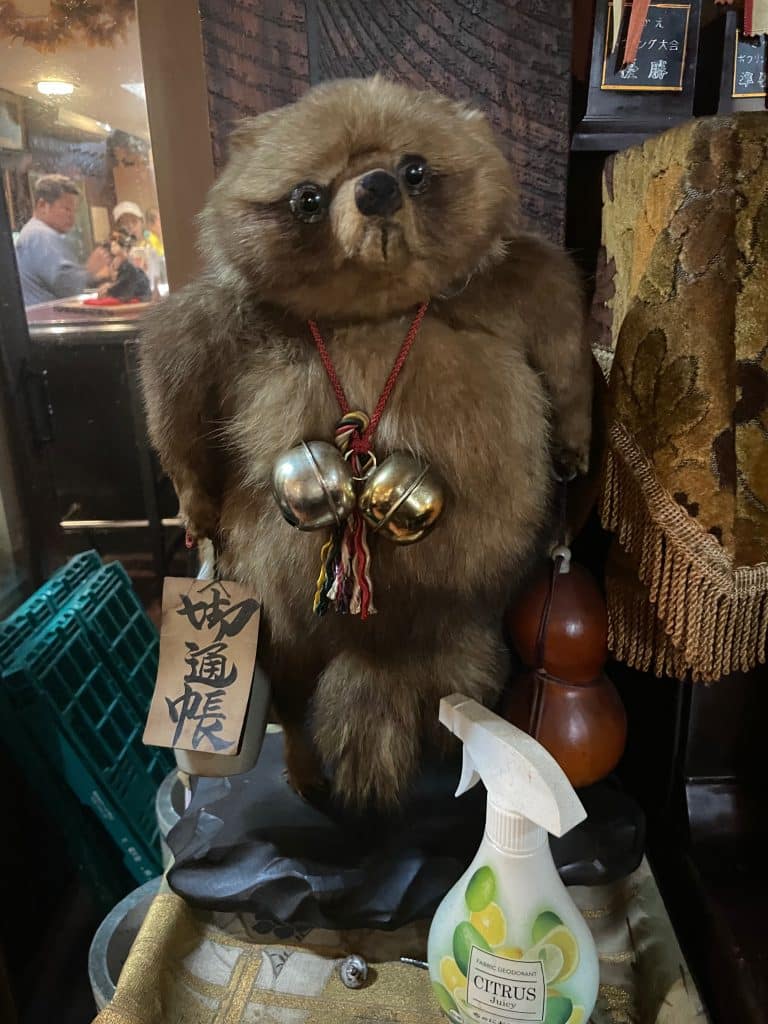
Check, Please!
It was time to call it a night. While I might have been embarrassed after my less than stellar performace, everyone else was too busy having a good time to even notice. I wasn’t keeping track of how many beers I had. My wife doesn’t drink alcohol but she had several teas and soft drinks. We were overjoyed when the bill came to a total of only ¥5,400 or ¥2,700 each. That’s only $18.00 each at the current exchange rate. Over the summer, I attended a Billy Idol/Joan Jett concert at Madison Square Garden in New York and ONE large cup of Bud Light was going for $18.00. (Look it up if you don’t believe me), so I really appreciate these type of places where you can spend several hours having a good time and it won’t break the bank.






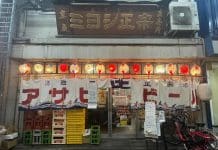


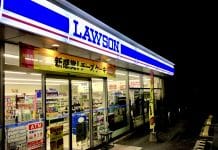


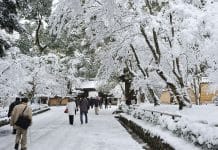
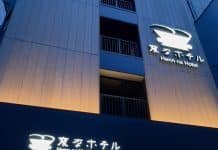







Very comical and enlightening all at the same time and makes the reader want to know what comes next! I’d say that’s a win! Very good, inspiring, and makes me want to go next time ! Cheers, Wes